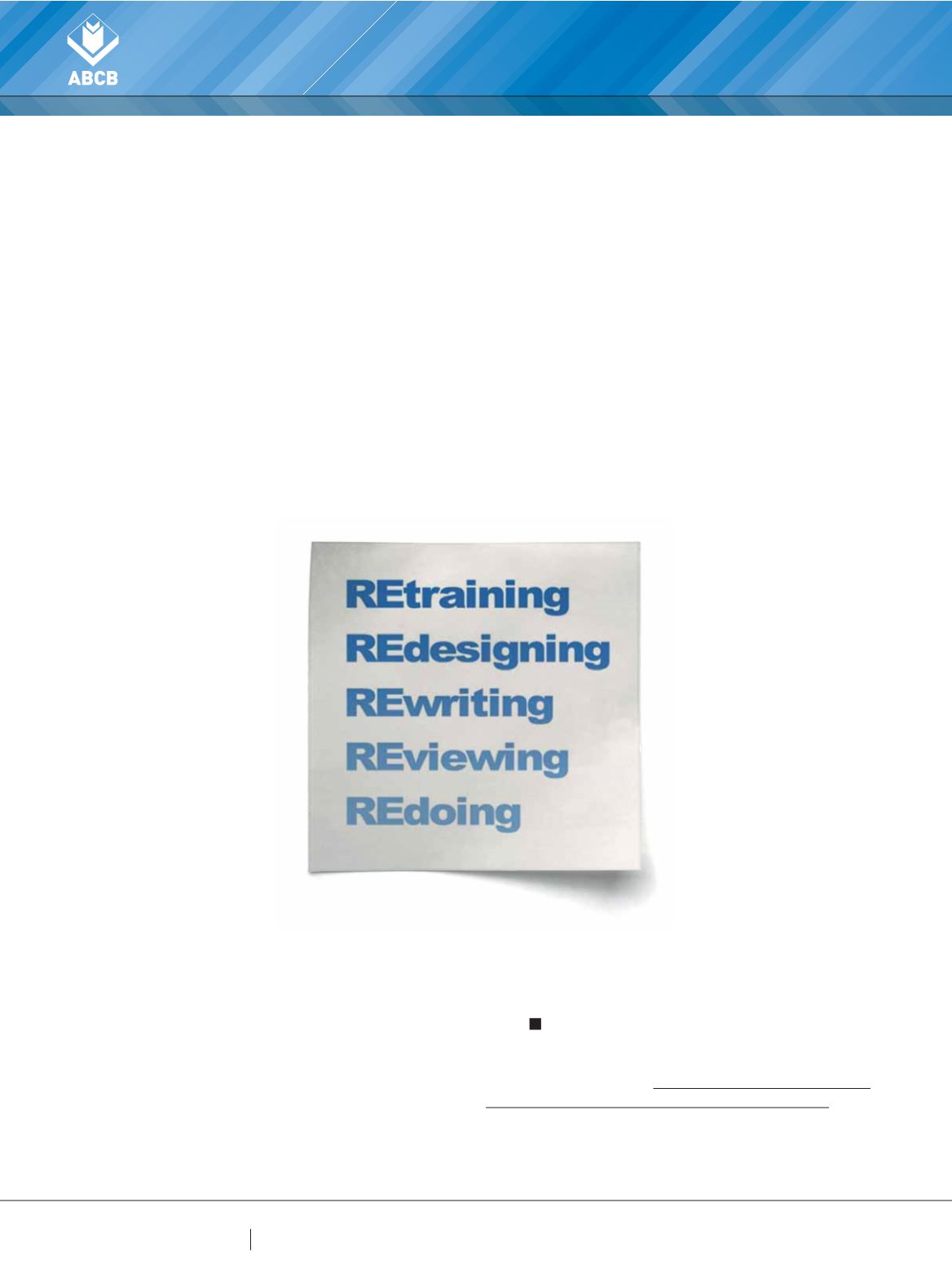

76
PLUMBING CONNECTION
AUTUMN 2016
REDUCING THE “RE” FACTOR TO
BENEFIT CODE USERS
THE ABCB EXPLAINS THE DECISION TO MOVE TO A THREE-YEAR AMENDMENT CYCLE FOLLOWING NCC 2016.
I
f you have been in the building and construction industry
for a while, you might remember the days when the Building
Code of Australia (BCA) was amended every SIX months.
Between 1990 and 1996, the BCA was amended irregularly
but generally twice per year. With the introduction of the
performance-based BCA96, amendments were made in
January and July each year. From BCA 2004, the pace of
code amendments slowed somewhat with a move to annual
amendments that took effect from 1 May each year.
The Plumbing Code of Australia
(PCA), first published by the
National Plumbing Regulators
Forum in 2004, remained
unamended (but not nationally
adopted) until it joined the
National Construction Code (NCC)
series in 2011. Since then, the PCA
like the BCA has been amended
every year.
Code changes can be a double-
edged sword. On the one hand,
they can be seen as keeping the
code relevant and contemporary
and adopting a continuous
improvement approach. On the
other hand, code changes can
place significant burdens on code
users; burdens that manifest
themselves in the time and money
spent on retraining, redesigning, rewriting, reviewing, redoing
and a host of other “re”s.
It would be wrong to expect that a document like the NCC
should never change. Over time, code changes are necessary
to respond to emerging issues, changing practices and new
technologies. The challenge is getting the balance right so that
these changes occur in a way that allows code users to keep
up (and comply as intended) and avoids industry constantly
being in “re” mode.
Feedback received by the ABCB from individual code users,
industry bodies and other sources clearly said that annual
code changes did not achieve that balance. For example, a
NSW parliamentary inquiry into building practice stated, “A key
problem for building practitioners is that the Building Code is
too frequently changed and amended.” Another source stated,
“Certifiers have to take on the role of educators because of
rapid changes in the building code”. Under an annual code
amendment cycle, the public comment draft of the next
edition is released just one month after the current edition is
enacted.
Regular readers of the ABCB’s Australian Building
Regulation Bulletin (ABRB) will be familiar with the ABCB’s
Next Instalment of Building Regulatory Reform which includes
making the NCC free of charge for online users, and a suite
of reforms to reduce red tape,
improve housing affordability and
lower construction costs. A key
part of these reforms is the move
from an annual NCC amendment
cycle to a three-year amendment
cycle.
A decision to move to a three-
year amendment cycle following
NCC 2016 was taken by the
Building Ministers’ Forum at
its meeting on 30 May 2014. In
taking this decision, the BMF
recognised that there still needed
to be a mechanism for making
code changes in exceptional
circumstances, for example,
to respond to urgent safety
and health risks. These “out-
of-session” code changes will
be subject to strict criteria and can only be made following
support of the majority of members of the Board of the ABCB.
The 2016 edition of the NCC is being finalised for enactment
from 1 May 2016. This will be the last edition of the NCC under
the annual amendment cycle. This means that under a three-
year amendment cycle, the next scheduled edition will be NCC
2019.
For further information on the NCC amendment cycle, please
contact the ABCB office at
http://www.abcb.gov.au/en/about- the-australian-building-codes-board/contact-us.aspxAustralian Building Codes Board
www.abcb.gov.au















